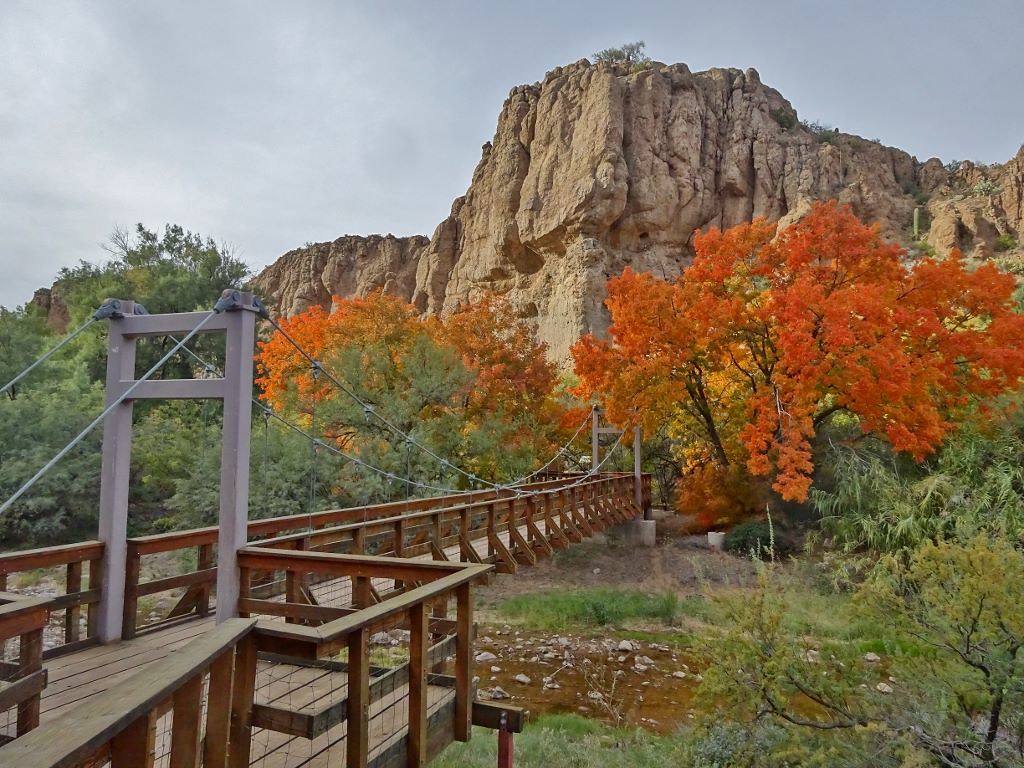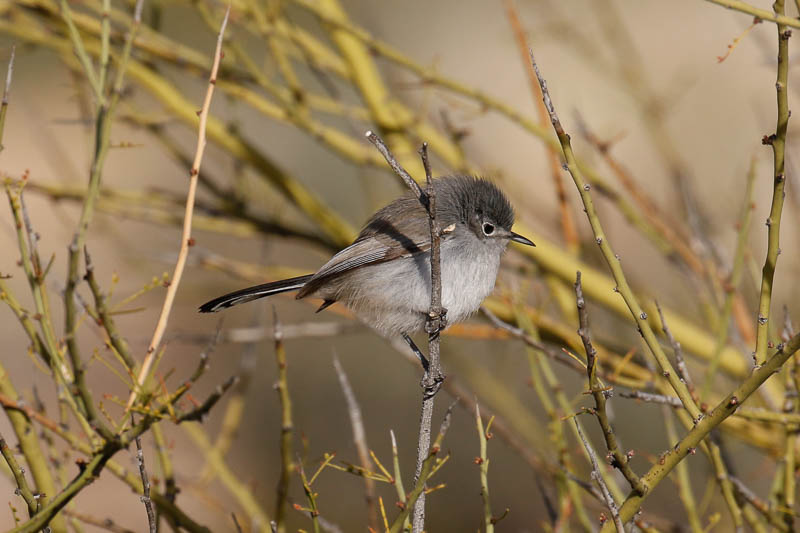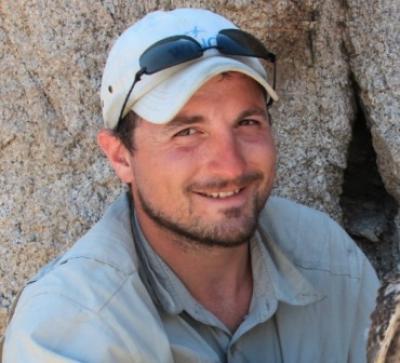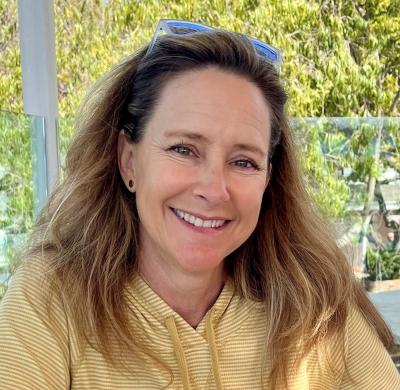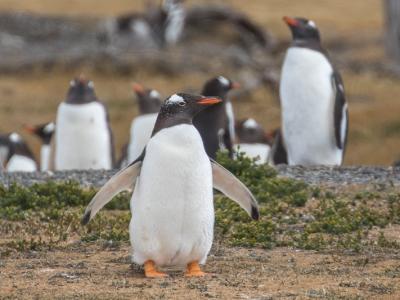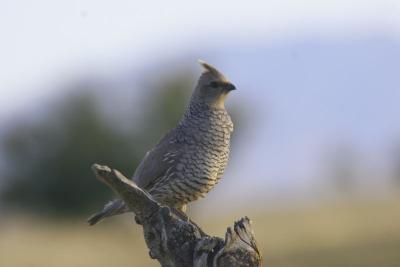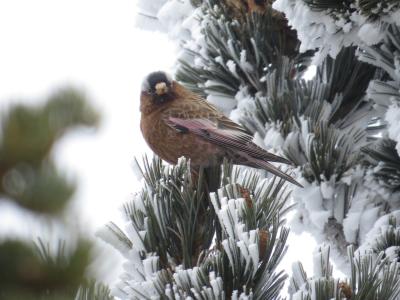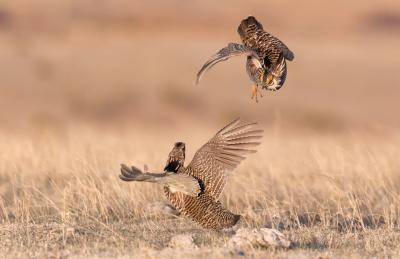Arizona and Utah
Fall Migration in the Canyonlands
-
Sep 2-14, 2025
Jake Mohlmann
Tour Price to be Determined
Tour Price to be Determined
Our tour will combine breathtaking landscapes with exciting birdwatching, especially in the desert oases. We’ll visit world-renown canyons and monoliths sculpted from the massive Colorado Plateau, including the Grand Canyon, Bryce and Zion Canyons, Monument Valley, and the Petrified Forest. We’ll also stop at a number of historic and scenic sites in Navajo country before relaxing in the boreal coolness of eastern Arizona’s White Mountains.
Day 1: The trip begins at 6:00 pm in Phoenix. Night in Phoenix.
This was an excellent tour, the perfect mix of sightseeing and bird watching. It was the fastest 12 days I’ve ever spent. It was as well my third tour with Jake and he was, as always,sensitive to everyone’s abilities, capabilities and desires. -Kristi S.
Day 2: We’ll start this morning with a drive to Boyce Thompson Arboretum State Park east of Phoenix. Here we can expect an assortment of desert residents such as Black Phoebe, Cactus Wren, Phainopepla, Broad-billed Hummingbird, and Abert’s Towhee. Western migrants that commonly pass through the Arizona lowlands include Lazuli Bunting, Brewer’s Sparrow, MacGillivray’s Warbler, and Western Tanager. After lunch we’ll drive north, along the west side of Roosevelt Lake leaving the blazing heat behind as we climb the Mogollon Rim toward Flagstaff. Time permitting; we’ll stop at several lakes en route where we may see an assortment of ducks, Western Bluebird, American Kestrel, and possibly a herd of Elk chest deep in one of Arizona’s largest natural lakes. Night in Flagstaff.
Day 3: We’ll leave early for our drive to the North Rim of the Grand Canyon. Just after first light we’ll visit a local Flagstaff canyon where resident Lewis’s Woodpeckers feed on acorns overhead and more than 150 petroglyphs from the ancient dwellers who once lived here decorate the canyon walls. Our journey will take us through the spectacular Painted Desert and along the Vermilion Cliffs, where we’ll look for the recently reintroduced California Condor. We’ll arrive at the North Rim in the mid-afternoon in time to explore magnificent vantage points while birding in the ponderosa pine and spruce-fir forests that dominate the area. Steller’s Jay and Pygmy Nuthatch will be much in evidence and lingering summer residents may include Grace’s Warbler and Zone-tailed Hawk. Night at the North Rim.
Days 4: After a morning watching the sunrise over the east rim of the Grand Canyon, we’ll stop at various canyon overlooks while searching for the elusive Dusky Grouse and American Three-toed Woodpecker. Later we’ll drive north stopping at an overlook to view the Grand Staircase of Utah where Pinyon Jay and Juniper Titmouse can occasionally be seen. We’ll likely see a wide variety of western migrants including several Empidonax flycatchers, Western Wood-Pewee, Warbling Vireo, Black-headed Grosbeak, Green-tailed Towhee and several species of warbler possibly including Hermit, Townsend’s, and Virginia’s. Although the western migrants will be our main concern, we may spot at least one eastern vagrant. Night in Springdale.
Day 5: This morning we’ll pass into southern Utah’s Zion National Park, where the willow-fringed Virgin River flows below towering red cliffs. We’ll ride the tram to various spots inside the canyon to explore Zion’s splendid terrain, and once again we’ll have the opportunity to see a wide array of migrants as well as resident Black and Say’s Phoebes, Rock and Canyon Wrens, and possibly American Dipper on the river. In the afternoon we’ll drive to Cedar Breaks National Monument on the west side of the Markagunt Plateau and pass through spruce-fir forest where we’ll look for Williamson’s Sapsucker and Clark’s Nutcracker. The overlook at Cedar Breaks is breathtaking, rivaling that of the Grand Canyon, and perhaps we’ll find Golden Eagle or Prairie Falcon soaring overhead. Night in Mt. Carmel Junction.
Day 6: We’ll drive the short distance north to Bryce Canyon National Park with stops at several lakes to search for stray migrants. Although not known for extraordinary bird diversity, Bryce Canyon more than makes up for it with astounding scenery. The fairyland quality of the landscape with its spires and spindle-like formations is one of the highlights of the tour. The surroundings might tempt us to ignore the birds, but Townsend’s Solitaire, Black-billed Magpie, and Mountain Chickadee provide welcome distractions. In the afternoon we’ll scour Panguitch Lake high on the Colorado Plateau and perhaps the only spot on our route for less common water birds like American White Pelican, various gulls, terns and if we’re extremely lucky a Greater Sage-Grouse. Night in Mt. Carmel Junction.
Day 7: This morning we’ll leave the canyons of southwestern Utah behind to begin our travels in Navajo country. The drive to Page, Arizona passes through splendid terrain as the road descends through the Grand Staircase to the barren approaches of Lake Powell. At the Page Waste-water Treatment Plant we can expect an assortment of waterbirds, perhaps including various shorebirds. Early September is an excellent time for rarities, and if we’re lucky we may spot a jaeger or Sabine’s Gull. Northern Arizona is memorable for its fantastic geology and both ancient and modern Indian culture. Just outside Page we’ll visit Antelope Canyon, a wondrous slot canyon with intricate, swirling patterns etched deep into sandstone walls. We’ll also investigate isolated clusters of trees; any patch of vegetation here, no matter how small, acts as a magnet for migrants. One such oasis near Kayenta was the site of one of the most impressive fallouts we’ve seen in Arizona, with literally hundreds of migrant warblers and vireos crammed into just 10 trees. During the late afternoon we’ll drive north of Kayenta and into the famed Monument Valley. Most of us may be familiar with the valley from television or magazines, but actually being in the presence of these huge stone monoliths as the sun sets is beyond description. Night in Kayenta.
Day 8: Some of the most exciting birdwatching in the West involves oasis-hopping in such famous areas as Death Valley or the Mojave Desert of eastern California. Oases in northeastern Arizona have proved over the years to be just as rewarding. Today we’ll begin a two-day journey from Kayenta to Springerville, stopping en route at many of the best oases in northern Arizona. Our main stops will be Many Farms and Tsaile Lakes, where we may see a variety of waterbirds. We’ll also search the sagebrush for Sage Thrasher and Sagebrush Sparrow, a recent taxonomic split. We’ll end the day at spectacular Canyon de Chelly National Monument peering down 1,000 foot cliffs at a modern Navajo agrarian society. Night in Chinle.
Day 9: We’ll start this morning at Ganado Lake and the Hubbell Trading Post. We can expect an assortment of migrants, and with luck we’ll find one or more rarities. We’ll drive through the Painted Desert and Petrified Forest National Park, where we’ll check the trees near the park headquarters before absorbing the sights within the park. Our main destination is Eagar, located at 7,000 feet at the base of the White Mountains. We’ll have the late afternoon to explore habitats around the towns of Springerville and Eagar, including St. John’s groves of cottonwoods, and agricultural fields, which act collectively as one giant migrant trap. Night in Eagar.
Days 10-11: For a change of pace, we’ll spend two days in the Springerville area. We’ll visit South Fork, one of the prettiest parts of northern Arizona and one of the best birding localities in the state. Nesting Gray Catbirds are reminiscent of the East (South Fork is the only place they nest in the Southwest), and we may find a few lingerers. We’ll see numerous common migrants and perhaps such birds as Rufous and Calliope Hummingbirds, Williamson’s Sapsucker, American Dipper, or Olive Warbler. The combination of large numbers of migrants, resident ponderosa pine and pinyon-juniper species, and attractive surroundings makes the banks of the Little Colorado river a pleasant and worthwhile stop. We’ll have ample opportunity to birdwatch in the White Mountains at elevations up to 9,000 feet. The mountains here look like the Colorado Rockies, and the birds are similar as well. We’ll search especially for American Three-toed Woodpecker, Gray Jay, and Golden-crowned Kinglet, all of which nest locally in the spruce-fir forest. Nights in Eagar.
Day 12: After a final early morning walk in the cool temperatures of the high elevations, we’ll start our journey back to Phoenix where we’ll pass through five of the seven life zones found in the country. This gives us a chance to search for species we haven’t yet seen. We’ll break up the drive with stops in the White Mountains, and our route will take us along the Mogollon Rim to the town of Globe, where we may see Mexican Jay, Band-tailed Pigeon, and possibly Hepatic Tanager. As we descend from the rim we’ll search the chaparral for Gray Vireo and Rufous-crowned and Black-chinned Sparrows. The afternoon in Phoenix will undoubtedly be very warm, but may bring a suite of new species for the trip. Night in Phoenix.
Day 13: The tour concludes this morning in Phoenix.
Note: The information presented here is an abbreviated version of our formal General Information for this tour. Its purpose is solely to give readers a sense of what might be involved if they take this tour. Although we do our best to make sure that what follows here is completely accurate, it should not be used as a replacement for the formal document which will be sent to all tour registrants, and whose contents supersedes any information contained here.
ENTERING THE UNITED STATES: Non-United States citizens other than Canadians will need a valid passport and may need a tourist visa. Consult your nearest U.S. embassy or consulate for details. Canadian citizens will need to carry proof of citizenship in the form of a passport of birth certificate.
PACE OF TOUR: This tour is neither strenuous, nor is there the need for very early morning starts except for one day for the sunrise at the Grand Canyon. Most days will begin with breakfast between 6:00 am and 7:00 am at the hotels, or in a nearby breakfast restaurant. Lunches will be a combination of sandwich shops and picnic lunches in the field. Dinners will be in nice restaurants either at the hotel, or nearby. As we cover a fair amount of territory, some afternoons will be spent traveling to new destinations and hotels.
HEALTH: Arizona and Utah present no real hazards to the visiting birdwatcher but certain factors must be considered.
Sun: Any time of year in the desert southwest the sun can be intense. A broad-brimmed hat, proper clothing and a strong sun cream lotion are essential.
Elevation: Much of our birding is at elevations between 4000 and 9000 feet, and while we do not schedule anything even faintly strenuous at the higher altitudes, anyone with a respiratory problem should consult his or her doctor before scheduling the trip. We will stay overnight at 8,000 feet on the North Rim. At Mt. Carmel Junction, Kayenta, Chinle our hotels are situated between 5,300 – 5,700 feet. While in Eagar our hotel is at 7,000 feet. During the day we go to Cedar Breaks National Monument we will briefly be walking just above 10,000 feet. While on the North Rim and in portions of the White Mountains we will have brief walks up to 9,000 – 9,400 feet.
Spiny Plants: The most common injury results from spines penetrating light canvas shoes. Many desert plants in the southwest are armed with thorns or spines and we recommend tough canvas or leather shoes of at least ankle height and tough trousers as the best safeguards.
Dehydration: Dehydration is a constant concern in Arizona especially when birding at lower elevations in the desert. The leader will always have an ample supply of water and stop as frequently as necessary for bathroom stops. Drinking a lot of water is highly encouraged throughout the tour.
Smoking: Smoking is prohibited in the vehicles or when the group is gathered for meals, checklists, etc. If you are sharing a room with a nonsmoker, please do not smoke in the room. If you smoke in the field, do so well away and downwind from the group. If any location where the group is gathered has a stricter policy than the WINGS policy, that stricter policy will prevail.
Miscellaneous: Rattlesnakes are not a hazard but one always needs to use common sense and be alert in desert areas. We actively look for reptiles and feel lucky to see one rattlesnake per summer trip. Scorpions are nocturnal and rarely seen, and the tarantulas sometimes seen on the highways are not dangerous.
Chiggers, mosquitos, and/or other biting insects may be encountered some years but not in others. We recommend using insect repellents with a high concentration of DEET.
CLIMATE: Late summer in the mountains of northern and central Arizona can be decidedly autumnal with early morning temperatures in the high 30’s while daytime high temperatures in lower valley habitats may reach an excess of 100º F. Monsoon rain activity can last through September so rain showers are possible at any time of day or night, however most of the rain events are downpours that occur in the afternoon hours.
ACCOMMODATIONS: We stay at standard hotels throughout. Single occupancy is available throughout the tour; all rooms will have private bathroom facilities. Wireless internet is available in all our hotels except for the Grand Canyon. Some hotels we stay in do not have elevators.
FOOD: Food is North American standard. Various times during the tour we will have a chance to sample local cuisine.
Food Allergies / Requirements: We cannot guarantee that all food allergies can be accommodated at every destination. Participants with significant food allergies or special dietary requirements should bring appropriate foods with them for those times when their needs cannot be met. Announced meal times are always approximate depending on how the day unfolds. Participants who need to eat according to a fixed schedule should bring supplemental food. Please contact the WINGS office if you have any questions.
TRANSPORTATION: We will be traveling by leader-driven 12 or 15 passenger window van or minivan, depending on the group size. Participants should be able to ride in any seat in tour vehicles.
2023 Narrative
In Brief:
An amazing 1986 miles and 193 species of birds were logged on our latest Arizona and Utah adventure. This tour is designed to capture both the indescribable beauty of a vast region as well as it’s varied and abundant wildlife. With major destinations like the Grand Canyon, Monument Valley and Bryce Canyon National Park we were exposed to over 2 billion years of geologic history. As luck would have it our group got to witness several adult California flying from below our feet at Marble Canyon’s bridge. A complete surprise came when a showy Prothonotary Warbler decided to bath in a puddle right in front of the van at Nutrioso Reservoir, perhaps only the second county record. The world-famous Navajo Reservation’s wind whipped sand across our faces as we watched the sun set with a stunning rainbow arched over Canyon de Chelly’s Spider Rock, and a waterfall show plunging over the rim immediately afterwards. Not to be overshadowed by the famous parks were places like Arizona’s White Mountains where we were able to unwind, relax and enjoy a few days of blissful birding isolation before ending our tour in the saguaro-studded landscape of the Sonoran Desert thousands of feet below.
In Detail:
Our first morning we quickly consumed breakfast and loaded up the van to try and beat the heat of the steamy Sonoran Desert. As we headed east through the saguaro forests, we noted several Red-tailed Hawks and Common Ravens perched like sentinels on the cactus tops. With our sights set on Boyce Thompson Arboretum we were ready for our first taste of desert birding. Almost immediately after entering the lush grounds a curious Canyon Wren played hide and seek with us finally resting atop a tower for us each to study one another’s ID marks. The constant song of the Bell’s Vireo was heard in the dense undergrowth, and Inca Doves eventually revealed their presence with their mournful hopeless songs perched up in the trees. Just above the ground an Abert’s Towhee sat near a water dish preening for a very long time. This riparian obligate species of the lower Colorado River drainages loves the dense habitats that the arboretum provides. A Rock Wren bounced around the rocky substrate that abounds here, and a fancy Black-throated Sparrow allowed good views at it drank from a leak in the water system. We took time look through the scads of Turkey Vultures for Zone-tailed Hawk, but none were revealed. We experienced 4 species of hummingbird while here. Rufous were defending the best food sources, Anna’s were displaying vibrant red heads nicely, Black-chinned made brief visits, and a Broad-billed was the last bird we saw before our exit feeding on some of the plants for sale. We were then off to Roosevelt Lake, a 20-mile-long wet oasis flooding the giant Tonto Basin. This area hosted a bunch of water birds including very nice comparisons of Western and Clarks Grebes. When seen alone these birds can be tough to identify but seeing them close together in the scope made us all experts at this task. Other waders were utilizing the muddy shorelines including numerous Great Blue Herons and single Great Egret. Perched high on some dead snags were a couple of Osprey clearly at home in the water wonderland. Numerous Double-crested Cormorants were also utilizing the opportune perches. We soon left the heat of the Sonoran Desert behind and made our way to Flagstaff perched at 7,000’ feet. On the way the views of Mormon Lake were wonderful as we watched a herd of elk resting at the side of the expansive water body. This was the most water I’ve ever seen in this like, a theme common at other water bodies throughout the tour.
The next morning, we headed north from Flagstaff with excellent views of the volcanic San Francisco Peaks and some of the over 600 cinder cones in the area. One quick stop harbored a good number of Lewis’s Woodpeckers in a ripe oak grove coming and going to their likely nesting tree. We then visited a muddy tank in the middle of the seemingly endless barren landscape that was full of water and birds including extended views of Yellow Warblers, House Finches, and flocks of Horned Larks coming in to drink. A pair of White-faced Ibis allowed close approach and inspection, as did 6 Black-necked Stilts performing their balancing act on tall skinny legs. Sparrows showed nicely as we kept flushing Lark and Black-throated around the soggy edges of the pond. A couple Blue-gray Gnatcatchers were in constant motion feeding on flying insects, and a single House Wren insisted on joining the party. A few fly-by Bank Swallows were nice to see sporting their brown chest bands in style. Travelers have been stopping at Cameron Trading Post for over 100 years as they pass through the Painted Desert on the banks of the Little Colorado River. This is still popular with tourists and the courtyard of the hotel grounds usually harbors birds that allow very close inspection. Despite this, the only addition for us this year was a White-winged Dove sitting still in the top of a cottonwood tree. We skirted the western edge of the Painted Desert and drove by the Echo Cliffs as we headed north towards the burnt Vermilion Cliffs and our next target bird. After crossing the impressive Marble Canyon and mighty Colorado River we were able to find a highly desired species for the trip. As soon as we walked out to the middle of Navajo Bridge, we started seeing enormous California Condors taking off heading upstream to perch on stately cliffs. One even joined us for our lunch and sat in plain view loafing on the lattice work of the bridge. It was very special to see these birds that were on the brink of extinction in all their glory, but an added bonus was having a researcher from the Peregrine Fund studying the birds telling us all about the conservation efforts of this Ice Age relict. The long drive into the North Rim of the Grand Canyon was abound with coniferous forest and gorgeous wildflower-filled meadows showered in yellow, purple and pink. In one of the long meadows, we stopped to admire a couple morphs of Swainson’s Hawk which were joining the hordes of Common Ravens feeding on an unknown food source on the ground right next to the road. A Peregrine Falcon also came in for a fly by and inspection. To end our day as the sun set at the Grand Canyon, we were treated to a sensational dinner overlooking this vast gorge.
Our sunrise at the Canyon was amazing to see as the shadows grew long and revealed the endless chasms that create the massive abyss. Our delicious buffet breakfast at the lodge afterwards was perfectly timed with the distracting scenery as company. A walk down Cape Royal introduced several Clark’s Nutcrackers flying in a swirling flock. A single Hammond’s Flycatcher hunted the ground level under the stunted pine trees. A few Steller’s Jays were quite vocal and were utilizing the car park to their foraging advantage. The winds were blowing up over the rim and turned out to be good conditions for raptors. An eye-level Peregrine Falcon came to check us out at the point, and a very confiding Zone-tailed Hawk coursed over the van as we were leaving. Looking at all those Turkey Vultures finally paid off! After our picnic lunch near Jacob Lake the van headed north ascending the Grand Staircase and a strategically placed overlook showed millions of years of geologic history in layer cake fashion with the Gray, White, Pink, and Red levels on display many miles in the distance.
Zion National Park with its towering thousand-foot rusty sandstone cliffs was a joy for us all. We meandered along the river walk enjoying the scarlet monkey flower and fireweed in bloom held precariously from the cliff sides in lush hanging gardens. It was hard to keep our heads down focusing on the river’s edge as we walked in awe with eyes up high admiring this stunning scenery. Eventually we did find an American Dipper that slowly worked its way upstream nearly at our feet, slowly checking the boulders and ripples for larval morsels to feed on. It eventually nabbed a tadpole that was repeatedly slapped against a rock to incapacitate it. In one of the hanging garden pools an extremely confiding Canyon Wren searched for insects in a moist rock pile. We headed east through a well-constructed tunnel and all of a sudden came out right in the middle of the pale Navajo Sandstone formation. Ancient sand dunes weaved through the landscape and yielded a small group of ‘Desert’ Big Horned Sheep climbing up the geological jungle gym that is this section of park. While observing these desert denizens a pair of Juniper Titmouse were observed flying back and forth across the canyon perhaps storing some evergreen seeds for later consumption. The Duck Creek area harbored several large flocks including gobs of Mountain Chickadees all curious at our presence, and both White-breasted and Red-breasted Nuthatches joining the frenzy. A couple Ruby-crowned Kinglets were new here, as were Audubon’s Yellow-rumped Warblers displaying yellow throats nicely. At the nearby pond Gadwall and Redhead were tending to recently fledged young, and a young Black-crowned Night Heron was observed swimming across the open water, an odd behavior for this wader. Cedar Breaks National Monument finally appeared as we gained elevation to over 10,000 feet and struck us all with its colorful beauty. One particular 1,400-year-old Pine Tree is still hanging on atop the gigantic amphitheater of red, orange, purple, and white endless cliffs on this western edge of the Markagungt Plateau.
The habitat around our next hotel in Mt. Carmel often produces several bird species not encountered at this point of the tour. A short walk down a 2-track through the oaks and junipers was our post breakfast prescription. Here we picked up Says and Black Phoebes, and both Green-winged and Cinnamon Teal. Bryce Canyon National Park protects some of the world’s most amazing rock structures. It’s easy to admire the 200-foot tall hoodoo arrangements resembling the world’s largest organ in opulent display. Some White-throated Swifts shot by across the Bryce’s stunning amphitheater. At some ponds in the nearby town a Northern Harrier was utilizing the windy conditions to harass a Common Raven over the ridge, or was it the other way around? We checked some marshes that had a restless flock of Yellow-headed Blackbirds. The nearby horse corrals had other blackbirds like Brewer’s and Brown-headed Cowbird in the mix. A complete surprise Wilson’s Snipe was spotted at close range sitting atop a large pile of dung, perhaps the warmest place to exist on a chilly rainy afternoon. At Panguitch Lake in the afternoon hundreds of birds were gathered at the mudflats on the southern edge. Other waterfowl numbers were high including groups of Canada Geese, Ruddy Ducks, and dozens of Eared Grebes in every plumage one could want. With more water than usual and the perfect conditions for floating nests, the sleek Western Grebes were trying a late season breeding attempt. A covey of California Gulls was huddled on the shoreline, attempting to hide a single Ring-billed Gull in the mix. A pair of Bald Eagles made quite an appearance. One of the adult birds was tearing apart a fish when a coyote decided to try and steal its meal, unsuccessfully I might add. Exceptionally good views of Say’s Phoebe perched on a fence wire were enjoyed, as were several sky-blue Mountain Bluebirds perfectly sitting atop the mullein stocks. We skirted by the impressive Marysvale Lava Flow on the way back to our hotel before enjoying another pie-filled dinner experience serenaded by classic oldies tunes.
The following morning a quick stop at Jackson Flats Reservoir in the town of Kanab was lush with birds. As soon as we pulled up to the boat launch we spotted a couple of Killdeer running around the beach, as well as a few Spotted Sandpipers frantically chasing each other. A small flock of Pied-billed Grebes tried to blend in with the hundreds of American Coots dabbling about and several Ruddy Ducks were actively diving. A large blackbird flock roosting in the rushes was mostly comprised of Great-tailed Grackles, and we eventually tracked down a dapper White-crowned Sparrow for intense scope views. Across the water a tree was filled with Turkey Vulture ornaments, all waiting for the thermals to pick up soon to help with their journey south. After appreciating the sunrise over the rusty cliffs of Kanab, we headed back east along the shore of the massive Lake Powell to Page. A quick stop at the wastewater treatment plant here had a wheeling flock of White-faced Ibis circling overhead, but decided never to come in for a landing. We added a Red-necked Phalarope blending in with its Wilson’s Phalarope cousins allowing a nice comparison of these similarly plumaged birds. Another nice duo for comparison were some Blue-winged Teal in close proximity to Cinnamon Teal, both with blue wing panels showing. A single Lesser Scaup added to our growing waterfowl list, and a single Solitary Sandpiper made a few fly-bys before landing in a distant pond. Seeing a flock of Yellow-headed Blackbirds on a telephone pole was great. They even sat there the entire time we were visiting for multiple extensive looks. A huge open-air truck whisked us away up a sandy wash and ultimately to the famed Antelope Canyon where water has etched perfectly smooth flowing walls of sandstone into an amazing array of geologic wonder. After a delicious Texas-style barbeque lunch we continued deeper into Navajo Country. Being in Kayenta put us in close proximity to enjoy the sunset at Monument Valley in the evening. The sun setting here provided all with fantastic pictures as the shadows of the mesas and spires became long as the sun was calling it a day. The finale was seeing the shadow of the west Mitten creeping slowly up the sheer face of the east Mitten looking like hands clapping high five for a truly memorable experience.
There are several water spots peppered throughout the Navajo Reservation and one such place we normally check is Many Farms Lake. As soon as we pulled up to the overlook a family group of Rock Wrens came close and regaled us with their antics. Over 100 White-faced Ibis were feeding in the mud flats, joining the many peeps and Killdeer weaving amongst them. A large Caspian Tern sat alongside a couple of Ring-billed Gulls showing its blood-red bill and black cap nicely. A spring on the eastern end of the lake produced 25 species of birds, some of which were new for the tour. The small pond here harbored a Redhead diving profusely, and we had a glimpse of a Sora walking along the edge of the reeds. It was great to chat with a couple of local Navajo farmers about their fields that were so productive. They even gave us a backpack full of corn on the cob to take with us and enjoy later. Canyon de Chelly allowed us a look at ancient ruins long inhabited by the Anasazi, or ‘ancient ones’. Their descendants, the Navajo Indians, are still farming the canyon today. At almost every point groups of White-throated Swifts were shooting by, at times close enough to our heads to hear the feathered bullets whoosh by. As we watched the sun setting on the incredible Spider Rock the scattered rain drops produced an incredible rainbow hanging right over the most famous feature of the canyon, creating a scene none of us will soon forget. On the drive out the rain began pouring. As a result we witnessed several waterfalls, some muddy and raging, cascading over the tops of the canyon edge. This was an amazing spectacle witnessed for the first time ever on this tour.
We set our compass south to explore the birding hotspots around Ganado. From the first stop lots of birds were observed using this oasis. Vesper Sparrows perched on the guide wires, Lazuli Buntings sat on brush piles allowing scope views, and a pair of Greater Roadrunners looked like statues on the hillside across the road. A Solitary Sandpiper was working the muddy edge of the lake picking amongst Northern Pintail, Northern Shovelers and groups of Green-winged Teal. A complete surprise Sabine’s Gull was the only bird sitting in the middle of the lake by itself. This bird was in its adult breeding plumage, something super rare to see inland like this. Most of the birds that show up are juvenile birds, very attractive in their own right but nothing compared to an adult. The lake’s lush edges here were ripe with birds and the trees peppering the shoreline gave great looks at several species. Warblers were in flocks comprised of Yellow, Virgina’s, Orange-crowned and Nashville. It took some time but we eventually had wonderful views of a Black-headed Grosbeak as well. We checked out nearby Hubbell Trading post that’s been in constant business since the 1860s. En route to the White Mountains we drove through the Petrified Forest National Park. The Visitor’s Center here just off old route 66 was harbor from the windy conditions for several migrants. In an hour of slowly walking the grounds we tallied 20 species of birds. Highlights included unusually good views of Hammond’s and Western Flycatcher, Cassin’s Vireo, and Sage thrasher. We even finally achieved the formidable goal of getting a good look at MacGillivray’s Warbler.
Wenima Wildlife Management Area sits astride the lush Little Colorado River stuffed with trees and shrubs full of food and a nice assortment of birds. On the entrance road we had a close flock of both Western and Chihuahuan Meadowlarks in the scope, both of which were conveniently in full song. As soon as we got out of the car park bird sightings started pouring in. A family group of Canyon Towhees foraging by the carpark and Lincoln’s Sparrows popped up out of the bushes. A single Willow Flycatcher consistently stayed roughly 20 feet from us as we slowly walked down the road. There was an unusually approachable Woodhouse’s Scrub-Jay whose bill was bent at the tip, making us wonder if it had possibly been hit by a car. An Olive-sided Flycatcher preened on a snag showing its seldom seen white rump patches perfectly. Several female Blue Grosbeaks kept popping in and out of a well-watered field. It took some of us a while to get looks at Yellow-breasted Chat, but finally succeeded when one was perched out in the open on a bare branch as we were leaving this productive area. Sipe Wildlife Area is a great place to sit down and relax while watching the hummingbird feeders. Great comparisons of Black-chinned, Broad-tailed, Rufous and even a couple dainty Calliope Hummingbird were enjoyed amid the Juniper-studded grasslands surrounding this location. We relaxed at Luna Lake near the New Mexico border while we enjoyed our picnic lunch. Rafts of mostly Coots, Mallards, and Ruddy Ducks huddled at the west end and no less than 6 Great Blue Herons picked through the chest-high grasses surrounding the water body. We then headed up the slopes of Escudilla Mountain where we were able to get a showy male Red Crossbill in the crosshairs of the scope for a lengthy view. On the way back to Eagar a quick stop at Nutrioso Reservoir yielded a couple Solitary Sandpipers blending in with the grassy verge. A flock of warblers allowed close study of Hermit and Black-throated Gray, as well as numerous Pygmy Nuthatches. A kind neighbor stopped to chat with us about some elk viewing nearby. While doing this I spotted a bright yellow bird bathing just in front of the van that turned out to be a strikingly beautiful Prothonotary Warbler. I had to rudely interrupt our friend and yell to the group to get on that bird and get some photos! We all enjoyed amazing views of this rarity. This could be only the second record for the county. Our last stop for the day was at Nelson Reservoir. It was here Jake uttered something I’d never heard. He said, “there’s a hummingbird IN the van.” We noticed immediately the poor bird trying to escape through the side window. It took several of us to eventually corral the beast and set it free. Numerous Sora, both bright adults and duller juveniles, were seen working the edge of the extensive marsh. A Virginia Rail repeatedly grunted at us, but never did reveal itself. Common Yellowthroats and Marsh Wrens also foraged here, and a Bald Eagle wheeled out over the lake scaring the heck out of the American Coot flock.
The next day we set our sights set on another portion of the Little Colorado River. We explored its South Fork, a gorgeous area with oak juniper woodlands spread across lava flows and a fertile valley filled with birds. The entrance road had both Chihuahuan and Western Meadowlarks flushing from the roadsides again, and Orange-crowned and Yellow-rumped Warblers gleaning insects from the sunflowers in bloom. A lonely puddle gave a water source to many sparrows including Brewers, Chipping, and multiple Vesper. Upon our arrival to the banks of the river a Greater Roadrunner was sunning itself with back feathers fluffed up exposing the dark bases, a great way to get warm on this chilly morning. Flocks of American Robins were feeding alongside Townsend’s Solitaires on ripe berries, a huge flocks of Pinyon Jays flew in formation overhead. Dozens of Turkey Vultures lifted off from their nighttime roost coming in to the thermal brewing upslope. A surprise Peregrine Falcon joined the initial lift-off of the day, as did an even rarer juvenile Northern Goshawk. A bit further down the road a flycatcher perched on the highest tree’s snag turned out to be an Olive-sided. Seeing this in quick succession with Western Wood-pewee and Willow Flycatcher was nice. Near the bridge the calls of a Hepatic Tanager came from high on the hillside. Though it took off almost immediately, we managed to eventually get excellent views of the red male tanager of pine forest habitats as he came in to check out the scene from the tallest tree. At Butler Canyon Nature Trail we stumbled into a couple of really nice mixed species flocks. One had at least 5 Townsend’s Warbler together at once, and both Cassin’s and Plumbeous Vireos were seen in close proximity showing differences nicely. A single Brown Creeper here was the only one for the trip, and a complete surprise Painted Redstart popped out of a dense shrub along the stream. At Sheep’s Crossing we strolled along the banks of the west fork of the Little Colorado River. Some owl tooting got a response from a territorial Northern Pygmy-Owl. This minute bird is packed with fearlessness and came directly in overhead for some amazing looks at this predator. Near the bridge, just before leaving, a pair of Canada Jays dropped in out of nowhere and perched prominently on top of some lofty spruce trees. Despite our best efforts we could not track the secretive birds down. After this we made a quick stop to Big Lake where we added 3,4 or 12 Common Mergansers blending in nicely sleeping atop the rocks along the shoreline. Before leaving the lake-studded high elevation grasslands we made one last stop at an overlook that proved to be quite fruitful. This was an amazing look at the immense cinder cone field laid out before us. It also had a constant supply of flock after flock of southbound Pine Siskins hitting the mountains and heading up slope right over our heads.
We said goodbye to the high elevations of the White Mountains and made our way back to Phoenix where another suite of birds would be waiting. A quick stop in the Salt River Gorge revealed yet another wide-open landscape where water has spent eons shaping countless canyons. A stop at Timber Camp added a showy Painted Redstart replete with red belly, white eye arc, and fanned tail staying busy while hunting in its unique way. A family of similarly colored Acorn Woodpeckers were constantly flying over the parking area with obvious black-and-white wings. A nice-sized foraging flock here added Grace’s Warbler, Hutton’s Vireo and yet another Hepatic Tanager. A bunch of Red Crossbills took turns taking baths in a puddle next to where we ate lunch. There were both red males and yellow females, as well as streaky young birds indicating some successful breeding nearby. At Oak Flat there was absolutely no water for the migrants, but it still managed to produce a few goodies. A mixed flock harbored a confiding Bewick’s Wren that came in to pishing, as well as a pair of Juniper Titmouse. Gorgeous Lark Sparrows were foraging throughout the campground, finally showing their clown-like facial patterns well. We left the oak zone and soon found ourselves surrounded by towering saguaro cactus once again. Despite missing it our first day, we were rewarded with a stunning Harris’s Hawk perched roadside overseeing its desert kingdom. Our final stop was at the Gilbert Water Ranch where we added shorebirds including Greater and Lesser Yellowlegs and Least Sandpiper. A roaming flock of warblers was highlighted by multiple Orange-crowned, Nashville, and a Black-throated Gray without a black throat. A Green Heron joined the wader party that also included Great and Snowy Egrets and adult Black-crowned Night Herons. A total of 52 species was found here strewn amongst the mud flats, dense shrubs and shade trees. Not too bad considering the 106-degree temperatures we were experiencing. This was such a wonderful way to wrap up our 2 weeks of birding bliss through northern Arizona and southern Utah’s most scenic spots.
Jake Mohlmann 2023
Jake really knows the birds, their behavior, their habitat and where to find them. He is outstanding, and patient, making sure everyone gets to have a good look at each and every bird. Jake knows birds through long personal experience, and helps us begin to do the same. Jake also knows a lot about the unique geology of the places we traveled, and helped us to appreciate it.
- Maureen L. on Arizona and Utah
This is not only the best tour but our best vacation taken. Jake was an outstanding all-purpose guide. The trip offered off-the-beaten path places to bird plus several scenic scenic national parks and national forests in AZ and UT. Even non-birders would enjoy this trip and if you were not a good birder, Jake would “put you on the bird”. He has a keen ear for bird calls and is an awesome interpreter for the geology and natural history the area has to offer. Jake, well done! We can’t wait to bird/sightsee with you again.
- Jean A. on Arizona and Utah
This was an excellent tour, the perfect mix of sightseeing and bird watching. It was the fastest 12 days I’ve ever spent. It was as well my third tour with Jake and he was, as always,sensitive to everyone’s abilities, capabilities and desires.
- Kristi S. on Arizona and Utah
Group size limited to seven participants with one leader.
